With encouraging photography results for a mid-range smartphone, the Motorola Moto G Plus boasts a very respectable DxOMark Mobile overall score of 84 points. Offering a 16Mp 1/2.4”-type sensor for high-quality images, together with a good array of additional photo features, Motorola is positioning its latest device for mass market appeal.
Our industry standard mobile tests analyze image quality of both still photos and video footage to determine individual photo and video sub-scores for each device, with the still photo scores weighted a bit higher than the video. Both sub-scores evaluate image quality across a range of categories, such as exposure and color; the Moto G Plus fares slightly better for still photos with a photo sub-score of 85 points compared to 81 for video.
Boasting consistently high photo scores in the mids 80’s for most categories, the Moto G Plus achieves a very good score for autofocus, which is fast and accurate in all conditions. Minor drawbacks, such as some loss of shadow detail, a slight blue colorcast, and HDR mode irregularities were observed, but overall, Motorola’s latest device impressed.
Video scores hover around the low to mid 80’s, with the best results for noise and exposure. The video module demonstrates good stabilization and autofocus in all lighting conditions, making successful indoor and outdoor movies possible. Video color and white balance are pleasant in all conditions, too, with noise reduction particularly successful outdoors. In low light, some video detail is lost due to visible luminance noise, with occasional autofocus inaccuracies recorded, too, but these are minor blips in an otherwise successful video performance.
Great HDR outdoor shots (when activated…)
Outdoors, the Moto G Plus generally delivers good target exposures, as well as vivid and pleasant color, with very little color shading visible in shadow regions. Slight white balance inaccuracies do occasionally occur, with a slight blue cast visible, but it’s not very offensive and color remains strong. Where the Moto G Plus excels in bright light is detail preservation, with well-controlled noise reduction resulting in smooth but nicely detailed files.
The Moto G Plus also offers a HDR shooting mode, which is triggered automatically when shooting high-contrast scenes. It’s a great feature for general outdoor shots, particularly shooting landscapes on bright days, and works well with many exposures, recording more detail than with standard exposures. HDR mode doesn’t always kick in when required, however, resulting in some inconsistent exposures with either large areas of overexposure, or a loss of detail in the shadow regions. A bit of post-production correction to lift dark shadows will help, and that, together with the dramatic skies captured in HDR mode, make some impressive landscape shots possible.
TIP: Shoot several exposures of high-contrast scenes and tweak the composition slightly to ensure that HDR mode kicks in. On HDR exposures with impressive sky details, use the picture editor app to lift dark shadows when needed and to apply a weak orange filter to correct the blue colorcast.
Bright exposures in extreme low light
Images captured under low-light conditions offer nice bold color rendition and accurate white balance when shooting under both tungsten and fluorescent light sources. Exposures are generally good, too, and even in extreme low-light conditions, images are bright and very usable. Some luminance noise is visible, particularly in blocks of uniform color, and very fine details start to disappear, but overall, the Moto G Plus is a capable device in low light.
Pleasant color using dual-tone LED flash
Using flash, the Moto G Plus’s dual-tone LED unit renders accurate white balance on both flash-only and mixed-lighting shots, with vivid color particularly in the center of the frame. A noticeable color shift is evident towards the edges of the frame, however, with a blue cast top left that changes to yellow in the bottom right. The flash is also well-centered, with accurate exposure in the middle of the image; but light attenuation is evident, particularly for flash-only results, with darker corners and some noise evident.
Details: Explaining the score
Exposure and Contrast (84)
With a very solid performance for exposure, the Moto G Plus scored 84 in both bright- and low-light conditions. It also fared well for Auto Exposure in our perceptual analysis of image quality, scoring 4.4 out of 5 (4.4/5), with generally good target exposures, good low-light exposure, and impressive skies in HDR mode that retained good detail in all but the brightest tones.
Color (85)
Higher color scores of 88 were recorded in bright light, and although dipping to 81 in low light, color remains pleasant. The same trend is evident in the perceptual results, too, with color rendering scoring 4.5/5 in bright light, compared to 3/5 in low light. White balance accuracy and adaptation both scored a very respectable 4.5/5, although if you prefer a warm tone to your smartphone pictures, you might want to tweak the slight blue cast that appears on some outdoor shots.
Texture (85)
Noise (86)
Texture is outstanding in bright light, achieving the best category score (98) in this condition. In low light, the score drops to 83 for HD and Web resolution images, but it recorded a much lower score of 71 for low-light 8Mp equivalent conversion, where the loss of fine detail becomes more obvious. This is a factor in calculating the overall score despite the outstanding bright-light results. Scores for noise are a little more consistent across lighting conditions: 89/100 in bright light and 86/100 in low light. The visible luminance noise in uniform areas on low-light shots affects the perceptual score, reducing it to 3.9/5 compared to 4.1/5 in bright light, but on the whole, noise reduction is reasonably well-managed.
Autofocus (91)
The Moto G Plus’s phase detection autofocus system offers fast, accurate, and repeatable focusing in all conditions. Scoring 95 in bright light and featuring face detection, the camera ensures that your portraits and people shots are sharp. Its low light autofocus score of 87/100 is still very good, despite slightly slower focusing in these conditions (as you’d expect). Continuous autofocus in preview mode suffers from some focus hunting and overshoots, particularly in low light. Despite this, perceptual scores for focus sharpness are strong in both lighting conditions, coming in at 4.7/5 for bright light and 4.4/5 for low light.
Artifacts (85)
In high-contrast backlit scenes, color fringes are visible, which display as purple lines along contrast edges. That’s affected the perceptual analysis score for color fringing at 3.6/5, but sharpness fares better at 4.5/5, with good acutance. In non-HDR exposures, with good target exposure for darker regions, a slight cyan shift that’s close to sky saturation occurs, and moiré is occasional visible in high-frequency patterns, too.
Flash (77)
The Moto G Plus achieves an overall flash score of 77, thanks to good flash exposures and vivid color rendering for both flash-only and mixed-light results. A perceptual score of 4.1/5 for flash repeatability is very respectable, too, with consistent results using flash under additional light sources, although this score was affected slightly due to some irregularities in focus and exposure for flash-only shots.

Video
81
The Moto G Plus offers 1080p/30fps video capture with autofocus, stabilization, and a built-in video editor. Video auto exposure is good, achieving fairly consistent scores of 86 in bright light and 82 in low light. Highlights are overexposed in some videos, however, and steps in exposure are sometimes visible when changing between extremes of brightness. The stabilization system boasts good scores in bright light, 85, which drops to 78 in low light, with slight motion blur visible on indoor movies. Videos boast some nice color rendering and accurate white balance in all conditions, too, although when transitioning from low to bright light, a pink cast can be seen as white balance adapts. Autofocus convergence is also fast in all conditions, but again, noticeable steps in convergence are visible as focus distance shifts between macro and infinity. Effective noise reduction when shooting outdoors produces particularly clean movies in bright light, with a little more noticeable luminance noise prevalent in low-light videos, where the finer details gets lost.
TIP: When changing between different lighting conditions, it’s better to stop recording and start a new video to avoid the noticeable steps in white balance, exposure, and focus. You can splice together two or more videos in a video-editing app.
Note: Results from both Photo and Video scores feed into the overall DxOMark Mobile score, with greater weight given to Photo results in the final analysis.
Photo Pros
- Very good detail preservation in bright light.
- Fast and accurate autofocus in all lighting conditions.
- Good noise reduction in bright light.
- In most outdoor scenes, colors are vivid and pleasant.
- In low-light and indoor conditions, the white balance is good.
Video Pros
- Good stabilization both in bright light and indoor conditions.
- Good color rendering and white balance in all lighting conditions.
- Fast autofocus convergence in all lighting conditions.
- Good noise reduction in bright light.
Photo Cons
- In several outdoor shots, some loss of details in the dark parts of the image.
- Slight blue cast sometimes visible in outdoor scenes.
- Some irregularities in HDR activation and white balance are visible.
- Cyan shift close to sky saturation visible in outdoor shots.
Video Cons
- In bright light, and from macro to infinity, some steps during the autofocus convergence are visible.
- Occasional autofocus inaccuracies are visible in low-light conditions.
- In low-light conditions, some details are lost and luminance noise is visible.


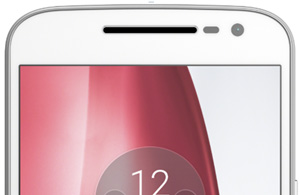




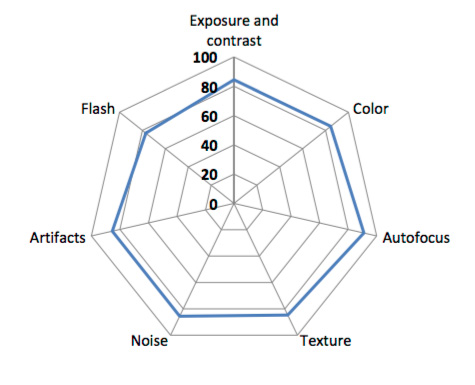
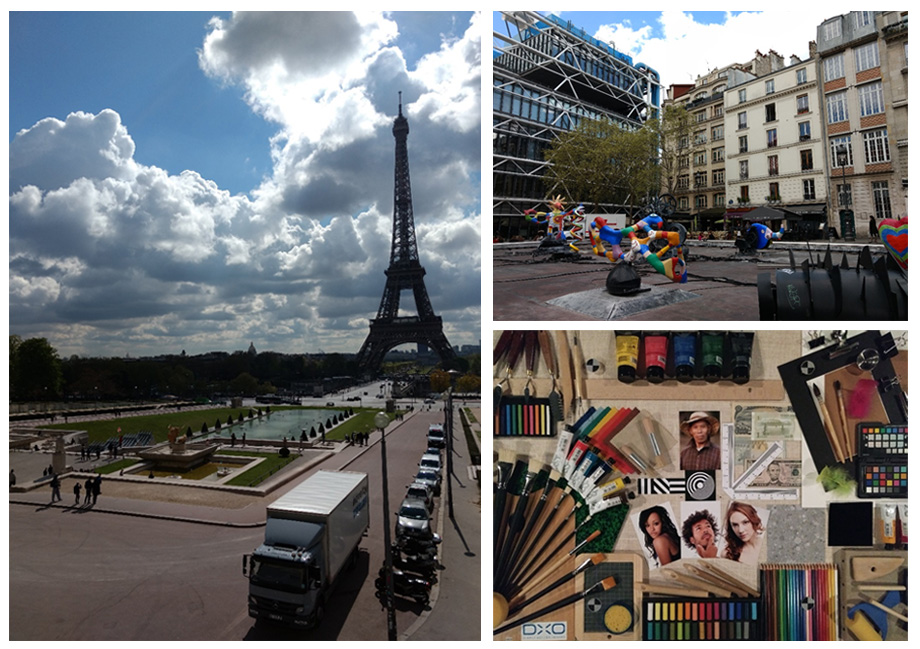
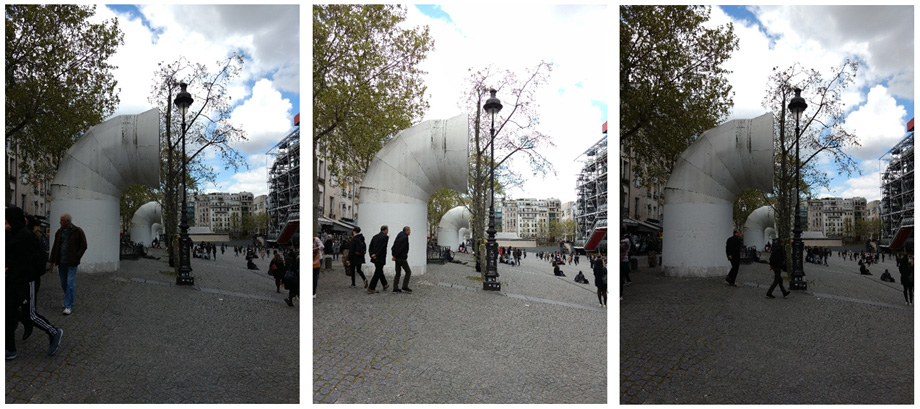
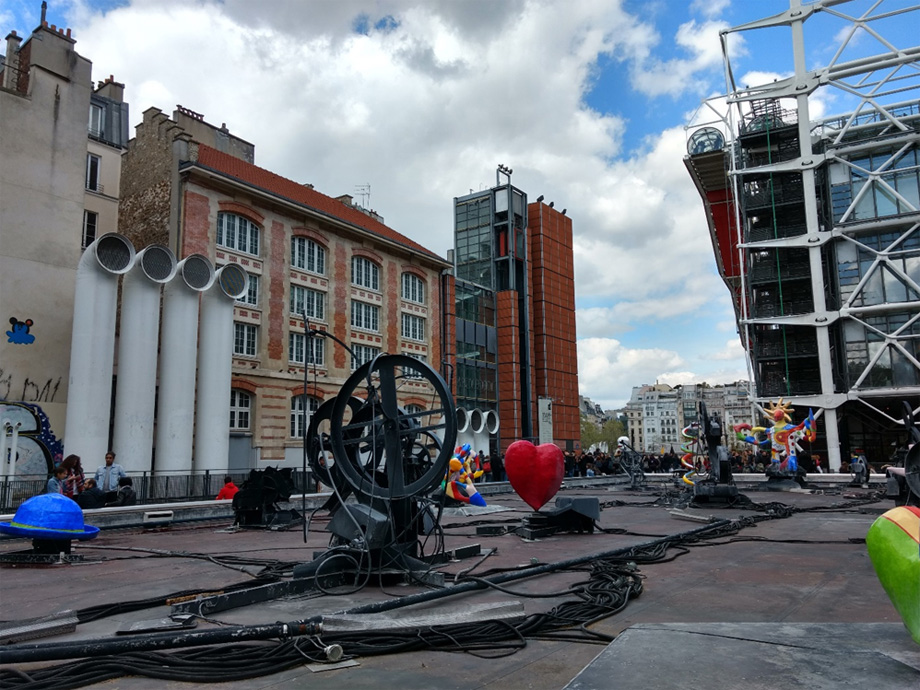


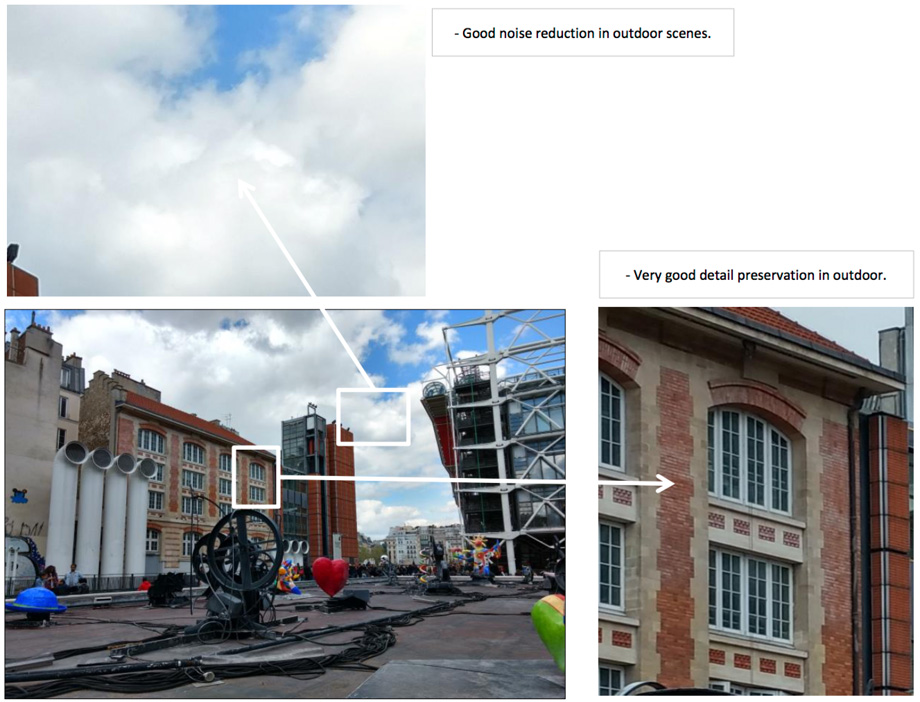


DXOMARK encourages its readers to share comments on the articles. To read or post comments, Disqus cookies are required. Change your Cookies Preferences and read more about our Comment Policy.